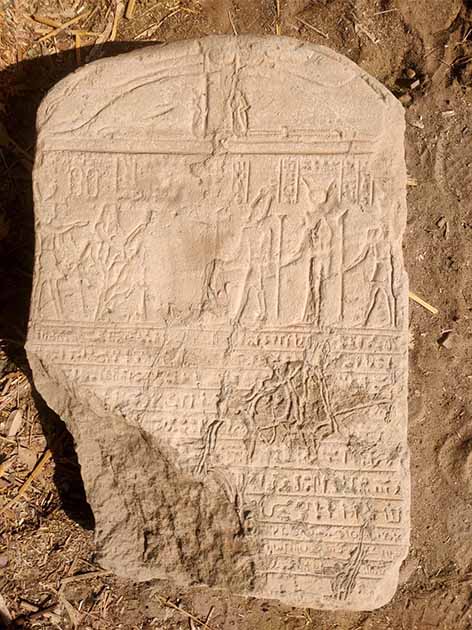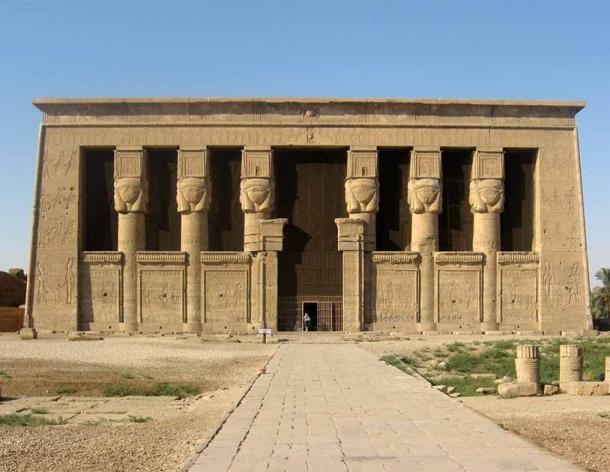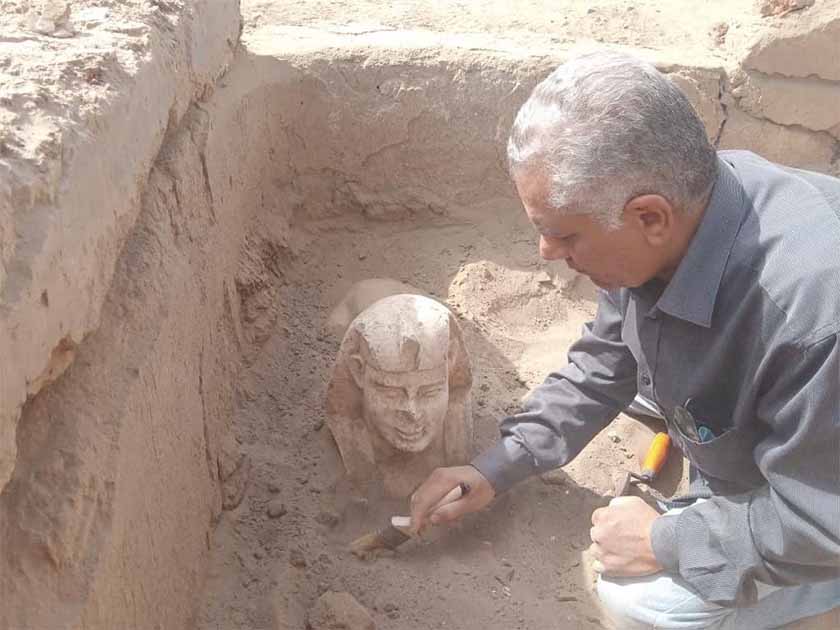Archaeologists in southern Egypt have uncovered a remarkable miniature sphinx statue, sporting a rare feature of a smiling face with two dimples. The artifact was found near the Hathor Temple in a tomb with two levels and is believed to potentially represent the Roman Emperor Claudius , making it a significant find. The unusual smiling expression on the sphinx is not typically found in ancient Egyptian art, adding to the intrigue and mystery surrounding the discovery.
In addition, researchers also found a Roman stele (stone slab) written in demotic and hieroglyphic scripts next to the sphinx. Once fully deciphered, the stele may reveal the identity of the sculpted ruler, according to a press release by Egypt’s Ministry of Tourism and Antiquities. They also discovered a two-layer platform and a mud-brick basin from the Byzantine era. Emperor Claudius is a likely option as he extended Rome’s rule into North Africa between 41 and 54 AD, which coincides with the dating of these finds.
The smiling sphinx in situ, near the Temple of Dendera in Egypt. Source: Ministry of Antiquities and Tourism

The Roman stela found next to the sphinx. Source: Ministry of Antiquities and Tourism
The Hathor Temple and the Dendera Zodiac
The Hathor Temple, which is within the Dendera Temple Complex in Qena province, located about 450 kilometers (280 miles) south of Cairo, is one of Egypt’s best-preserved ancient sites. The smiling sphinx and artifacts were discovered within the walls of the complex.
The Hathor temple was constructed during the Ptolemaic dynasty, which ruled Egypt from 305 BC to 30 BC. It was an important pilgrimage site in ancient Egypt, and many visitors would come to the temple to seek the goddess’s blessings and perform rituals. Hathor was a complex deity, worshipped as the goddess of love, beauty, fertility, music, and dance. She was also associated with motherhood, childbirth, and the sky.
The temple is home to the Dendera Zodiac , a celestial map that has been on display at the Louvre in Paris since 1922. The Dendera Zodiac is one of the earliest known representations of the constellations and is considered to be an important document in the history of astronomy. It shows the twelve zodiac signs, as well as other astronomical features such as the planets, the Milky Way, and the constellations of Orion and Sirius.

Temple of Hathor, Dendera (Public Domain)
Egypt’s Recent Discoveries to Boost Tourism
Egypt has been unveiling major archaeological finds in recent months, primarily in the Saqqara necropolis south of Cairo, but also in Giza and Luxor. Just last week, the antiquities ministry announced the discovery of a hidden nine-meter passage inside the Great Pyramid of Giza, which could lead to the burial chamber of pharaoh Khufu.
In January, archaeologists in Luxor uncovered an 1,800-year-old complete residential city from the Roman era. These discoveries have been seen by some experts as having more political and economic significance than scientific, reports the Associated Press .
Egypt is relying on tourism to revive its vital tourism industry, which has suffered a severe economic crisis, severely dependent on foreign tourism. The government aims to draw in 30 million tourists per year by 2028, up from 13 million before the pandemic.
The discovery of the sphinx statue near the Hathor Temple is another significant find for Egyptian archaeologists. With ongoing excavations in various parts of the country, Egypt’s rich history continues to be uncovered. These archaeological finds not only have scientific importance but also economic significance for the country’s vital tourism industry.
Top image: The smiling sphinx unearthed in Egypt. Source: Ministry of Tourism and Antiquities
By Sahir Pandey
